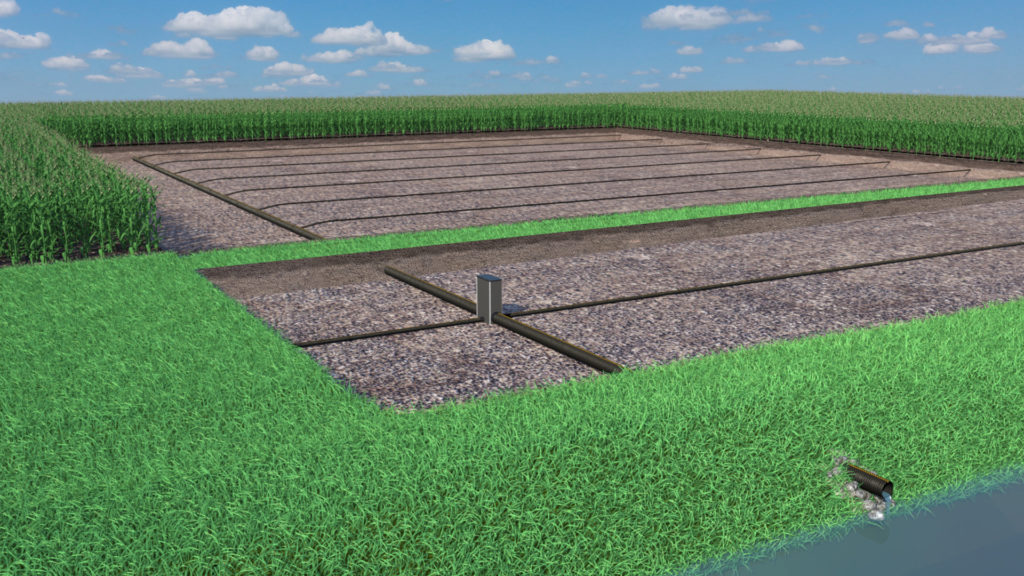When planning your buffer strips, consider the benefits of saturated buffers
December 6, 2016
 By Sara Hewitt, Farmer, Ag Educator, & Marketing Director of Hewitt Drainage Equipment
By Sara Hewitt, Farmer, Ag Educator, & Marketing Director of Hewitt Drainage Equipment
PRINSCO CUSTOMER & GUEST BLOGGER
In Minnesota, the updated buffer strip law requires implementation of 50 foot buffer strips on public waters which by definition includes rivers, lakes, streams and wetlands, by November 1, 2017. Public drainage ditches require 16.5 feet of buffer strips by November 1, 2018.

Adding tile and a control structure can add efficiency and impact to your buffer.
Planning for buffer strip installation should be happening now and throughout the winter months for spring and summer implementation. Since buffer strips have to be seeded in a perennial vegetation, spring implementation prior to crop going in the field appears to be the best option to meet the November 1, 2017 deadline. However, installing buffer strips is always an option whether required or not.
There are some options when implementing a buffer that farmers may consider such as planting an orchard grass that can be hayed or grazed, planting it in a pollinator friendly mix or planting tree seedlings, or looking at installing a water control structure as part of a saturated buffer.
A saturated buffer is one option to consider when installing either a required or optional 50 foot buffer, depending on your situation. A saturated buffer allows you to control and collect water for crops to use it, or divert it among a horizontal tile line to redirect to feed the vegetation within the buffer, and filter the water in the soil. At a minimum, a saturated buffer requires a 30 foot width. There also must be a tile main to intercept, you must be able to maintain a raised water table, and take the hydraulic gradient into account.
One of the issues with just installing a buffer, is that buffers can only help purify water that runs through it. By choosing to install a saturated buffer, you can divert the water to and through the buffer. The control structure allows manipulation of the levels of water within the drainage system. A saturated buffer not only intersects surface run-off that a simple, riparian buffer does, but also intersects tile water as it is diverted to the saturated buffer, allowing increased filtration of nitrates. More information about the removal of Nitrogen in saturated buffer test sites can be found through the Agricultural Drainage Management Coalition at www.admcoalition.com.
With a buffer strip already in place, installation of a saturated buffer is relatively cheaper than a bioreactor and installed similar to normal tile installations. Each site needs to be carefully evaluated to analyze if a saturated buffer is possible. As farmers and land owners look to install buffers for water quality purposes or to meet state requirements, exploring the option of a saturated buffer should be considered as a viable option for improving water quality and updating drainage systems.
Categories: Agriculture
